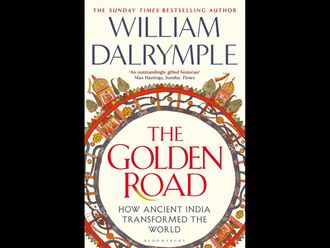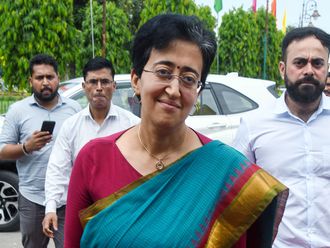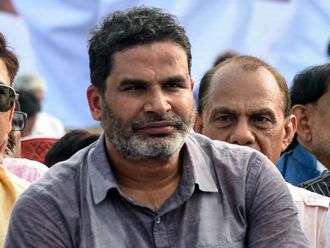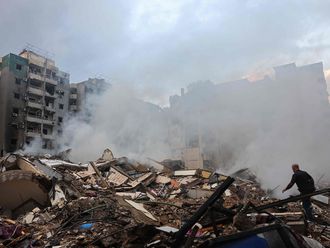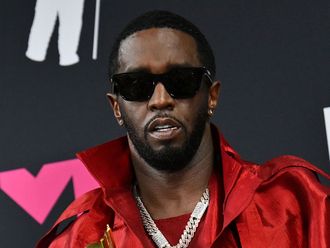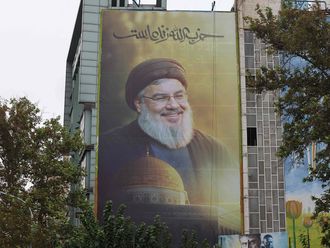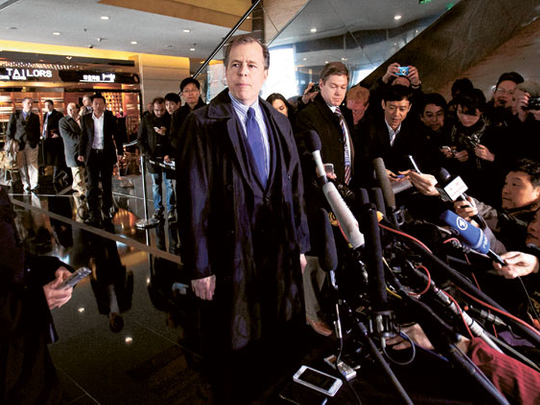
Last week's meeting between US Special Envoy Glyn Davies and North Korean First-Vice Foreign Minister Kim Gye Gwan was the first official encounter between the United States and North Korea since the death of leader Kim Jong-il two months ago.
After endless speculation about the future of North Korea, this meeting was an important reality check: an opportunity to take the pulse of the new management in Pyongyang, and particularly to discern changes or continuity in its efforts to build weapons of mass destruction.
Even on a good day, of course, America underestimates the difficulties of dealing with North Korea at its own peril. Korea specialists are fond of calling it the ‘land of no good options' (although that is probably true for many foreign-policy challenges facing the US today). The North remains the poster child for rogue states because of 60 years of bad behaviour, including its more recent nuclear and missile tests in 2006 and 2009 and conventional military attacks on South Korea in 2010.
If there is anyone who knows that, it's those of us who have had direct experience dealing with North Koreans at the negotiating table, on the ground, or conducting any other business face-to-face with them. I will never forget one of my first visits as a US government official to the Yongbyon nuclear facility in 1996, when I was harangued by a senior North Korean engineer who complained bitterly about the US and its treatment of his country for what felt like hours.
In the end, I responded in true State Department fashion that I would tell my superiors about his concerns and suggested we get down to business. He rapidly shifted gears and our talks were successful. At the same time, what is striking about the discourse in Washington these days is that we seem to have bought into myths that make Pyongyang appear three metres tall.
When I was in the State Department, we used to joke that the North Koreans and the Israelis would be quite a matchup in the ‘World Series' of negotiators. The North Koreans are tough customers. But a myth-free examination of the past two decades reveals a reality Americans for some reason refuse to recognise — the US has done very well negotiating with Pyongyang. Take the 1994 US-North Korea Agreed Framework that provided for the eventual dismantlement of North Korea's nuclear programme. In return, the North was to receive two new light-water reactors as well as heavy fuel oil.
Moreover, because of the better political relationships that followed with the US, Japan, and South Korea, food and other forms of assistance were provided to the North that might not have been forthcoming under more difficult circumstances. The 1994 agreement has been subjected to a lot of criticism as appeasement of North Korea. But for the people who worked on it, there was one stark reality that almost all the pundits neglect. In 1993, secret American intelligence estimates projected that North Korea could have enough fissile material — plutonium — for a stockpile approaching anywhere from 60-100 nuclear weapons by the year 2000.
American negotiators were smart enough to structure a step-by-step arrangement. If the North Koreans didn't perform in meeting US denuclearisation demands — and they didn't — the project would halt. Moreover, almost all of the $2 billion (Dh7.34 billion) spent on those reactors went to overseas companies, not to the North Koreans.
Which country ended up with the better deal? It's pretty clear — the US. Since 2002, the North Koreans have been playing catch-up ball. They have conducted two nuclear tests, produced what little plutonium they could from remaining facilities, and tried to get a uranium enrichment programme off the ground. They now have a small arsenal estimated at up to eight weapons that may gradually grow over the rest of the decade if their programme to produce highly enriched uranium progresses.
Best course of action
Of course, there are other reasons why the Obama administration has shied away from negotiations with Pyongyang in the past. Aside from North Korea's bad behaviour, Washington has felt a strong need to stick very close to a conservative South Korean ally that, rather than talking to the North, believed pressure and isolation was the best course of action to extract concessions from Pyongyang.
That view has proved wrong; Pyongyang has continued down the WMD path and even launched conventional military strikes against the South in 2010. Shying away from negotiations has also protected the administration from the inevitable Republican criticism but has denied us a valuable tool in stopping the North Korean threat. Nobody is under the illusion that negotiating with Pyongyang is easy.
But with the resumption of US-North Korean talks in Beijing, hopefully leading to new sessions of the six-party denuclearisation negotiations, Washington needs to put aside its myths. Yes, the US has to be very careful when it talks to Pyongyang. And yes, there have been instances when US negotiators were not careful enough. But the reality is that diplomacy with North Korea has served American interests well in the past and can do so again in the future.
Joel Wit is visiting fellow at the US-Korea Institute at Johns Hopkins University's School of Advanced International Studies. This article was written with the assistance of Jenny Town, a research associate.


